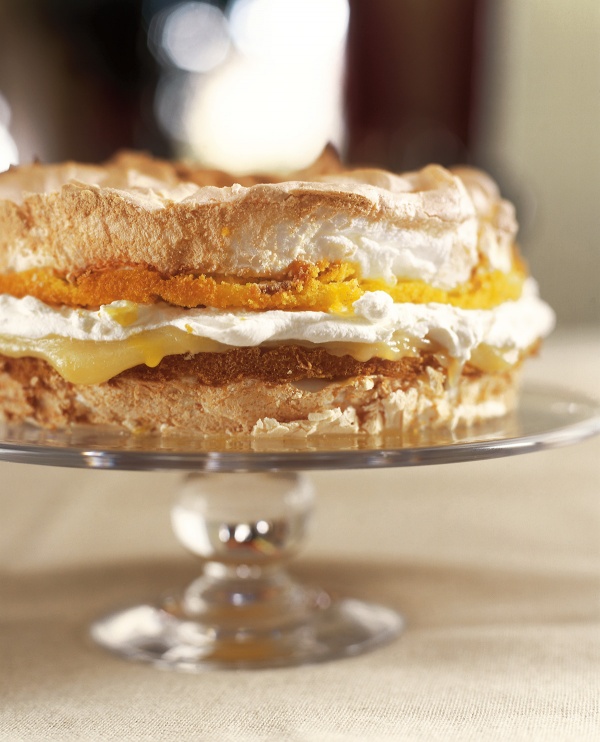Lemon_meringue_cake
Lemon Meringue Cake

In all honesty, the origin of this cake is simply that I cannot make a go of a lemon meringue pie. I’ve tried, and I’ve tried, and it’s not that I’ve utterly failed, but I haven’t completely delighted myself. There’s enough of that kind of falling short in the rest of life, without having to usher in disappointment and self-loathing in the kitchen. This, then, is the easy option. And the funny thing is, the layers of sponge, with their crisp-carapaced squashy-bellied meringue topping are, sandwiched with tart lemon curd and softly whipped cream, so much better than a lemon meringue pie could ever be.
Ingredients
Yields: 8 slices
- 125 grams very soft unsalted butter
- 4 large eggs (separated)
- 300 grams caster sugar (plus 1 teaspoon)
- 100 grams plain flour
- 25 grams cornflour
- 1 teaspoon baking powder
- ½ teaspoon bicarbonate of soda
- zest of 1 lemon
- 4 teaspoons lemon juice
- 2 teaspoons milk
- ½ teaspoon cream of tartar
- 150 millilitres double cream (or whipping cream)
- 150 grams good quality lemon curd
Method
- Preheat the oven to gas mark 6/200°C/180°C Fan/400ºF. Line and butter two 21cm / 8 inch sandwich tins.
- Mix the egg yolks, 100g / ½ cup of the sugar, the butter, flour, cornflour, baking powder, bicarb, and lemon zest in a processor. Add the lemon juice and milk and process again.
- Divide the mixture between the prepared tins. You will think you don’t even have enough to cover the bottom of the tins, but don’t panic. Spread calmly with a rubber spatula until smooth.
- Whisk the egg whites and cream of tartar until peaks form and then slowly whisk in 200g / 1 cup of sugar. Divide the whisked whites between the two sponge-filled tins, pouring or, more accurately, spreading the meringue straight on top of the cake batter.
- Smooth one flat with a metal spatula, and with the back of a spoon, peak the other and sprinkle 1 teaspoon sugar over the peaks. Put the tins into the oven for 20-25 minutes.
- With a cake-tester, pierce the cake that has the flat meringue topping to check it’s cooked all through. (It will have risen now but will fall back flattish later.) No sponge mixture should stick to the tester. Remove both cakes to a wire rack and let cool completely in the tins.
- Unmould the flat-topped one on to a cake stand or plate, meringue side down.
- Whisk the double cream until thick but not stiff and set aside. Spread the flat sponge surface of the first, waiting, cake with the lemon curd and than spatula over the cream and top with the remaining cake, bronze-peaked meringue uppermost.
Notes mentioning this note
Index
Meals [[grilled_lamb_shoulder Alison Roman’s Grilled lamb shoulder]] [[baked_minty_rice_feta_pomegranate_relish Baked Minty Rice with Feta and Pomegranate Relish]] [[baked_rice_confit_tomatoes_garlic Baked Rice with...